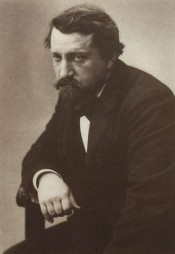
Valentin Alexandrovich Serov, a talented Russian painter, graphic artist and set designer, was born
7 (19) Valentin Alexandrovich Serov, a Russian painter, graphic artist, and set designer, was born in 1865, making him one of the greatest masters of portraiture. He was an academician in 1898 and a full member of the Imperial Academy of Arts from 1903 to 1905.
Serov was born into a family of composers, his father being Alexander Nikolaevich Serov and his mother Valentina Semyonovna Bergman. From a young age, he lived in an environment that was supportive of his artistic endeavors. Initially, Serov studied music but soon showed an interest in drawing. He was sent to Munich to study with German graphic artist Karl Köpping. In Paris, he met Ilya Repin, who recognized his talent and encouraged him to continue his studies.
After studying at the Kiev Drawing School under Nikolai Murashko, Serov returned to Moscow to continue his education with Repin and then at the Imperial Academy of Arts under Pavel Chistakov. However, he did not complete his studies at the academy.
The friendship between V.A. Serov and I.E. Repin, which was based on mutual respect and admiration for each other's work, helped to develop the young artist's skills and fostered in him a love for exploring and studying nature. In 1880, before Serov enrolled at the Academy of Fine Arts, he and Repin traveled to places associated with the Zaporozhian Sich, where they were able to immerse themselves in a creative atmosphere. The Abramtsevo art circle, with its rich artistic heritage, also had a significant impact on Serov's development. He regularly visited the Mamontov family's estate in Abramtsevo during the summer months, where he created many notable works, such as the famous portrait of Girl with Peaches, which depicted Vera, the 11-year-old daughter of Savva Mamontov, owner of the estate.
In other early works, including A Girl Illuminated by the Sun (1888) and Overgrown Pond, Domotkanovo (also 1888), the young artist creatively built on the achievements of his predecessors and began a new chapter in the history of Russian painting. His paintings from the early 1880s and 1890s show a holistic and poetic approach to capturing reality, characterized by accurate observations and clear compositional structure.
The author has shown himself to be a remarkable portrait artist, able to capture the richness of a person's inner life and the uniqueness of their personality. Since the late 1880s, portraiture has been a main genre in his work. His favorite models were artists, artists' wives, composers and writers. He painted portraits of A.N. Serov, K.A. Korovin, I.E. Zabelin, I.I. Levitan, N.S. Leskov, N.A. Rimsky-Korsakov, S.P. Diaghilev, M. Gorky and F.I. Chaliapin. V.A. Serov also painted portraits of members of the royal family and high society. These include Grand Duke Pavel Alexandrovich, Emperor Nicholas II, Emperor Alexander III, Princess Z.N. Yusupova, Prince F.F. Yusupov, Count Sumarokov-Elston and Princess O.K.. In the early 20th century, V. A. Serov turned to ancient mythology with his painting The Abduction of Europe (1910). He also created a series of works based on Russian history, including Peter II and Tsarevna Elizabeth on the Hunt (1900), Peter I on the Dog Hunt (1902), and Peter I in Montplaisir (1910-11).
A significant period in the artist's career was marked by the events of the 1905-07 revolution. In protest against the government's response to the January 9 demonstration, Serov resigned from his position as a full member of the Imperial Academy of Arts. He created anti-monarchist drawings for revolutionary satirical magazines.
During the 1910s, Serov collaborated with Sergei Diaghilev, the founder of the Russian Seasons, a series of theatrical tours that ran from 1908-21 and became world-famous.
From 1897 to 1909, V.A. Serov taught at the Moscow School of Painting, Sculpture, and Architecture, where he gained the admiration and respect of his students, including P.V. Kuznetsov, K.S. Petrov-Vodkin, N.N. Sapunov, M.S. Saryan, and N.P. Ulyanov. Since 1899, he was a member of the Mir Iskusstva association, organized their exhibitions, and worked to raise funds for the publication of a magazine with the same name. After the death of P.M. Tretyakov in 1898, Serov was elected to the council of the Tretyakov Gallery.
On November 22 (December 5) in 1911, V.A. Serov passed away in Moscow. His remains were initially buried at the Donskoy Cemetery, but in 1939, the artist's body was relocated to the Novodevichy Cemetery.
Lit.: Серов Валентин Александрович // Большая российская энциклопедия: научно-образовательный портал [электронный ресурс]. Режим доступа: https://bigenc.ru/c/serov-valentin-aleksandrovich-428816; Серов Валентин Александрович // Большая советская энциклопедия. Т. 38. М., 1955. С. 593–596; Соколова Н. И. Валентин Александрович Серов. М., 1961.
Based on the materials of Presidential Library:
Serov Valentin Alexandrovich (1865–1911) // Persons of Russia: [digital collection]

